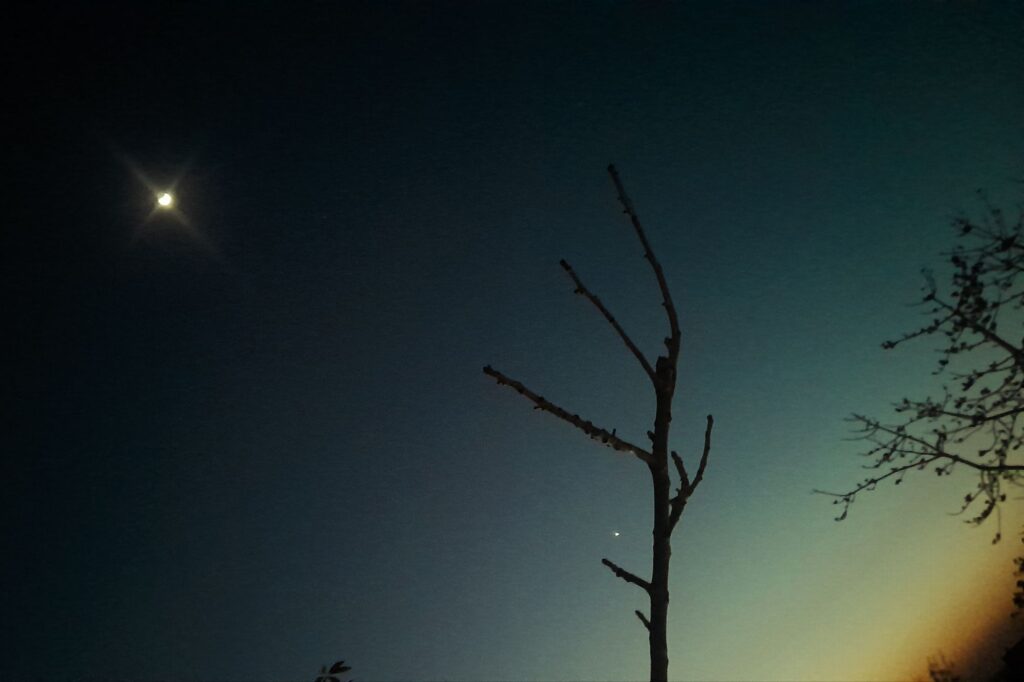
Venus—standing alone and distant near the horizon—doesn’t belong to the day or night. She is there—seen, admired, yet untouched. Maybe that’s how some souls are—glowing on the edges, never part of a whole, yet never losing their light.
Some shine not because they are placed among others, but because they exist on their own. People admire her from a distance, but who truly sees her? Who stops to wonder what it means to be this radiant and yet so untouchable? Some lights are meant to guide, some are meant to blind, and some—some are meant to stand alone, shining regardless.
But deep down, they know their worlds are incomplete without her.
In my native language, we call Venus “Zohra,” an Arabic word for beauty and radiance. And how beautiful is it that, for centuries, poets and lovers have been addressing their beloved ones and wives as “Zohra Jabee’n” to symbolize and showcase their admiration or as a way of affectionate teasing in love?
Zohra Jabee’n (زہرہ جبین) is a phrase in Urdu that means “one with a face or forehead like Venus’s,” which means someone with a face as radiant, glowing, beyond beautiful, and different from others as Venus.
Even in love letters, they have been addressing and calling their loved ones “Ay Meri Zohra Jabeen,” which means “Oh, my radiant-faced one” or “Oh, my beloved with a face as radiant as Venus.“
Isn’t it the superlative degree of love and beauty in any language?
And in Urdu, we also call Zohra “Ishq ki Devi”—the Goddess of Love—a symbol of beauty, passion, and longing. Love, like Venus, doesn’t always descend into open arms and doesn’t always belong to the hands that reach for it.
Sometimes, it stays suspended—close enough to see, yet forever untouched. Maybe love is nothing but a quiet burn in stolen glances, in the weight of words never said. Some loves are written in the sky—too far to hold, too bright to be forgotten.
Isn’t that the most beautiful kind of love?
— Sadia Hakim // Love, like Venus, doesn’t always descent into open arms, from Astropoetica Series

 — The Singularity of Love
— The Singularity of Love